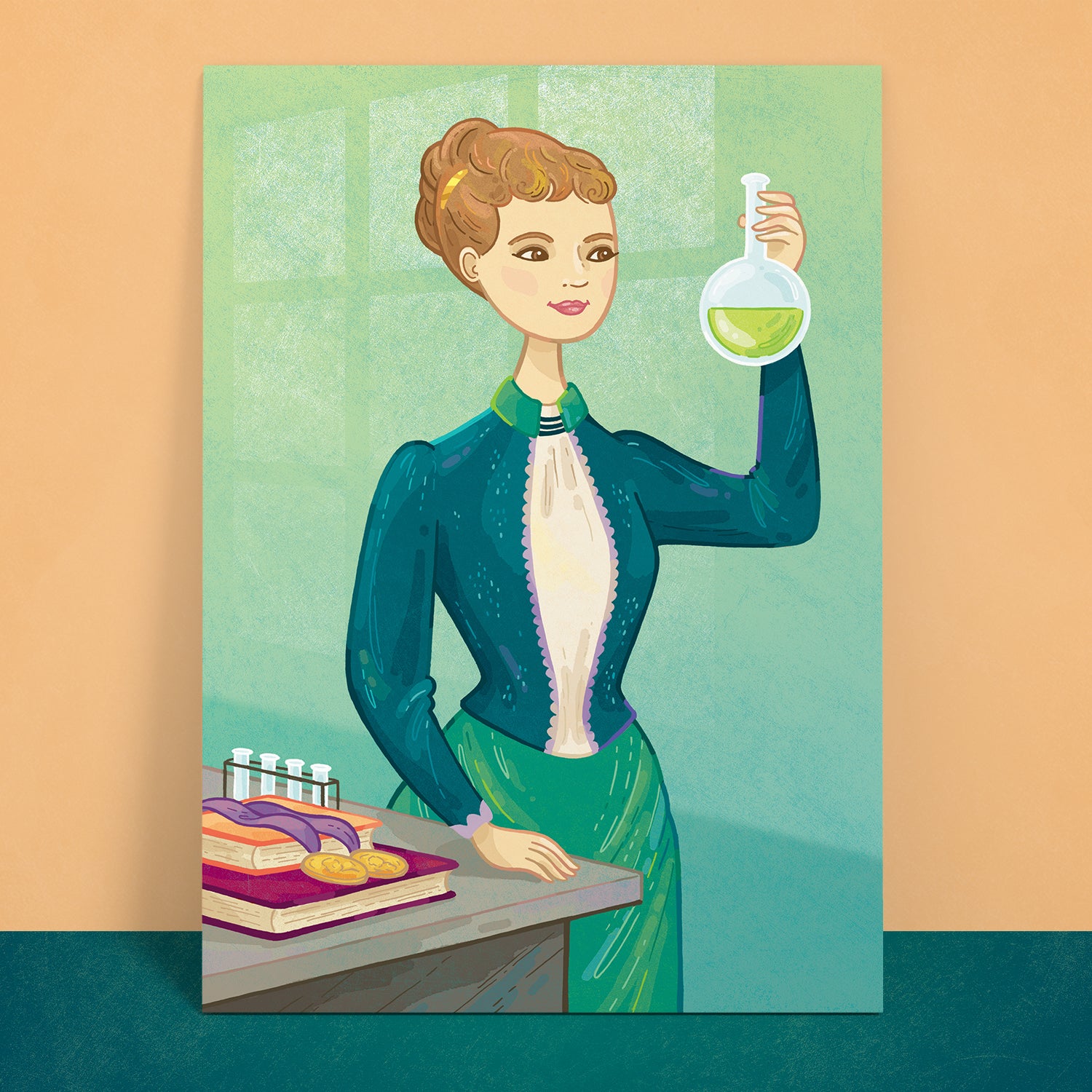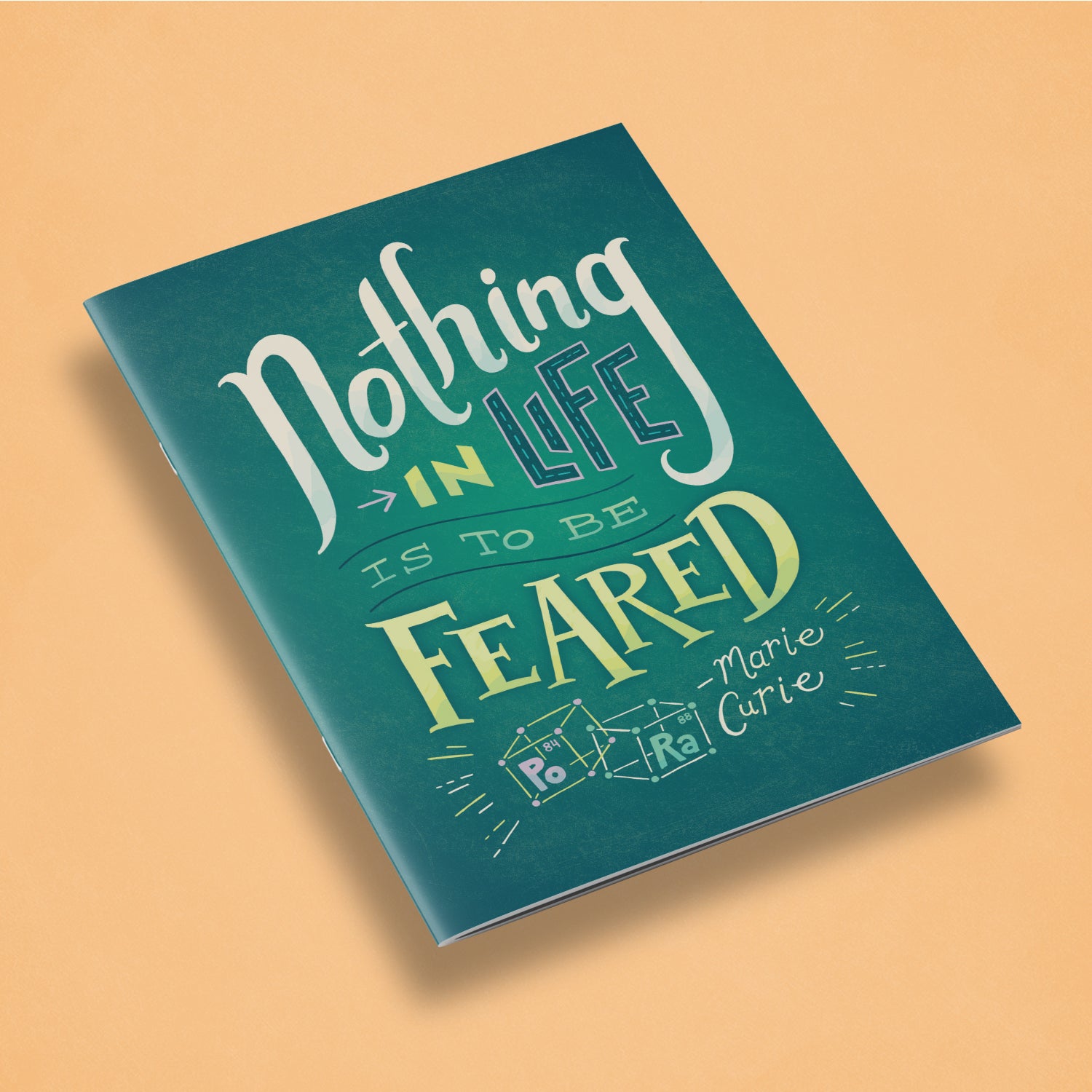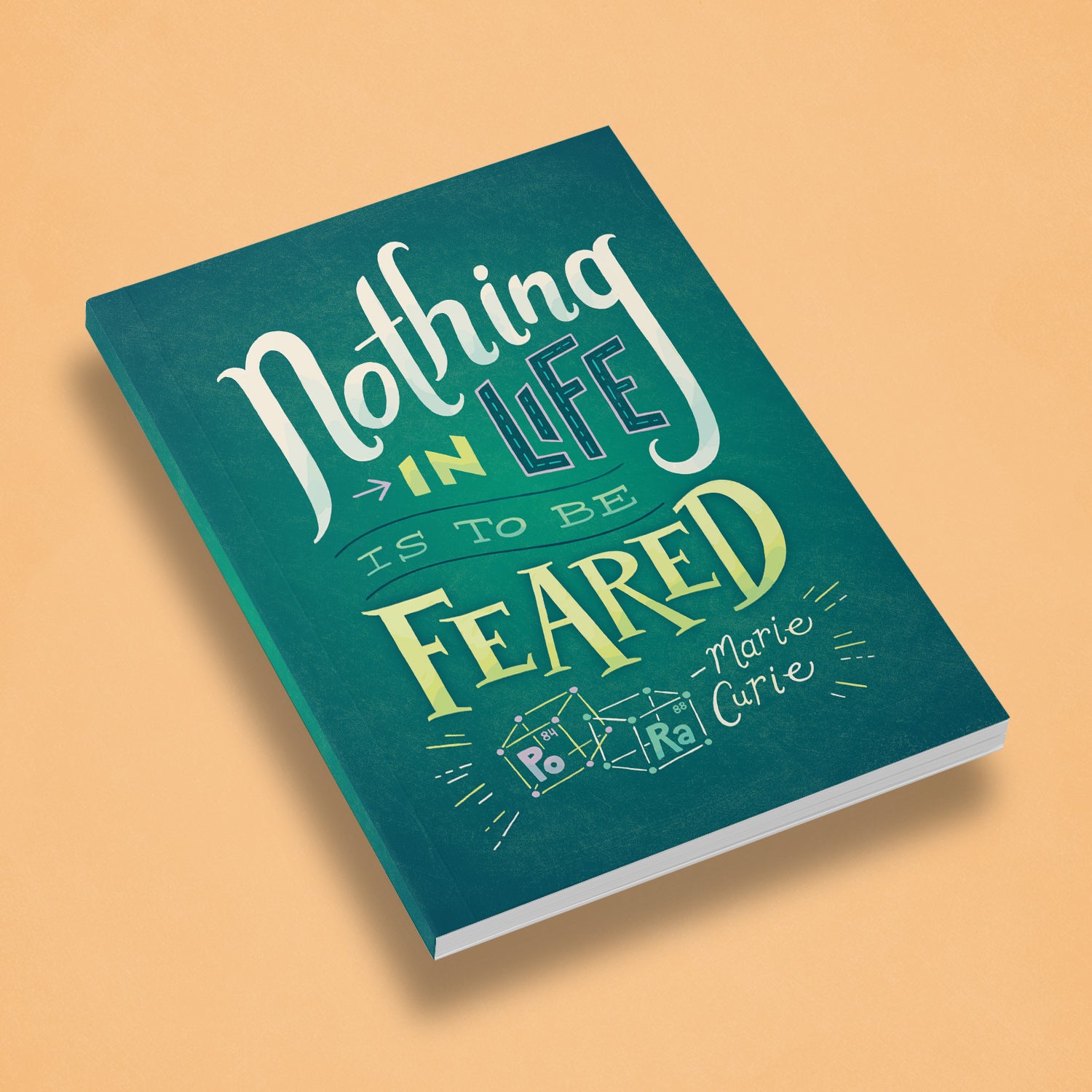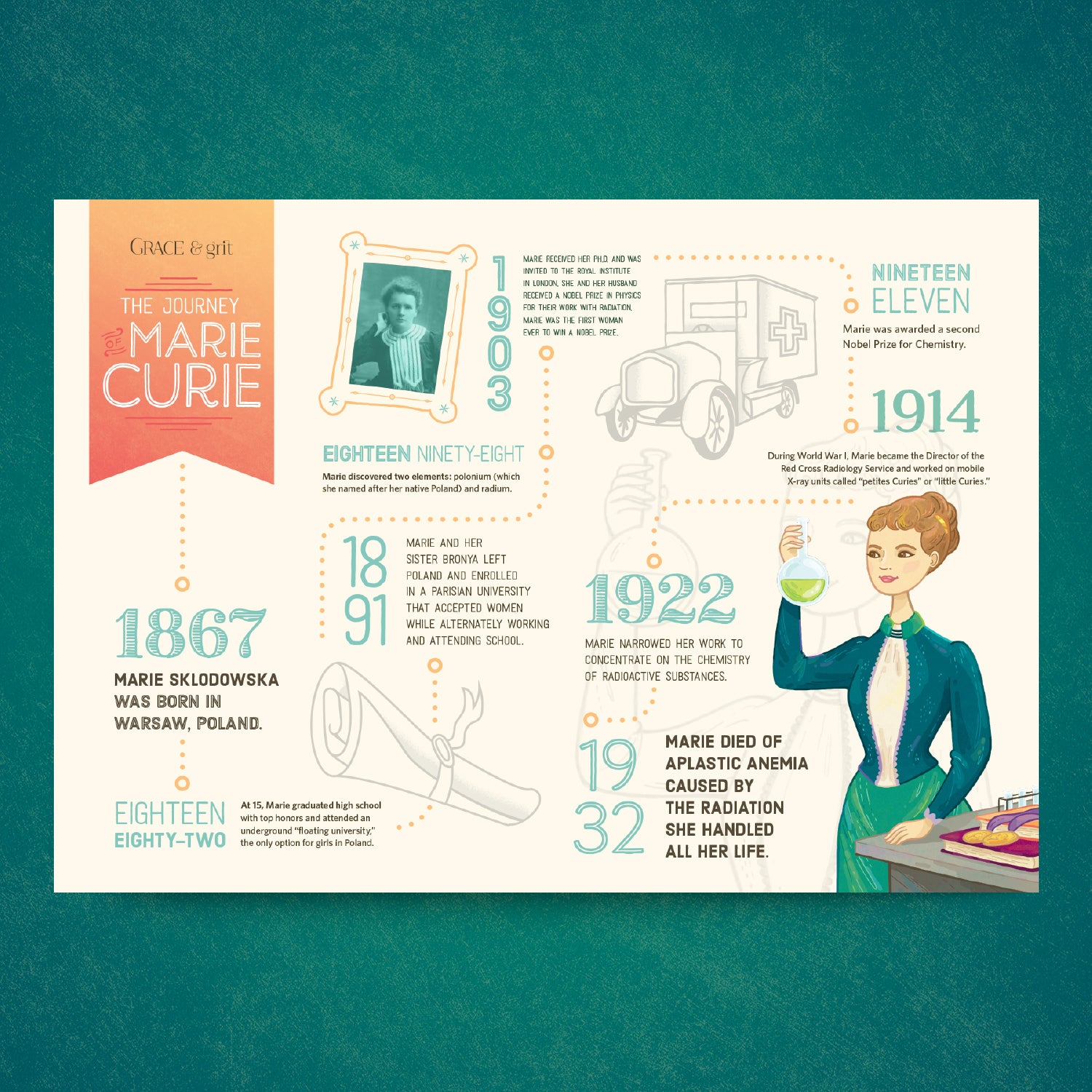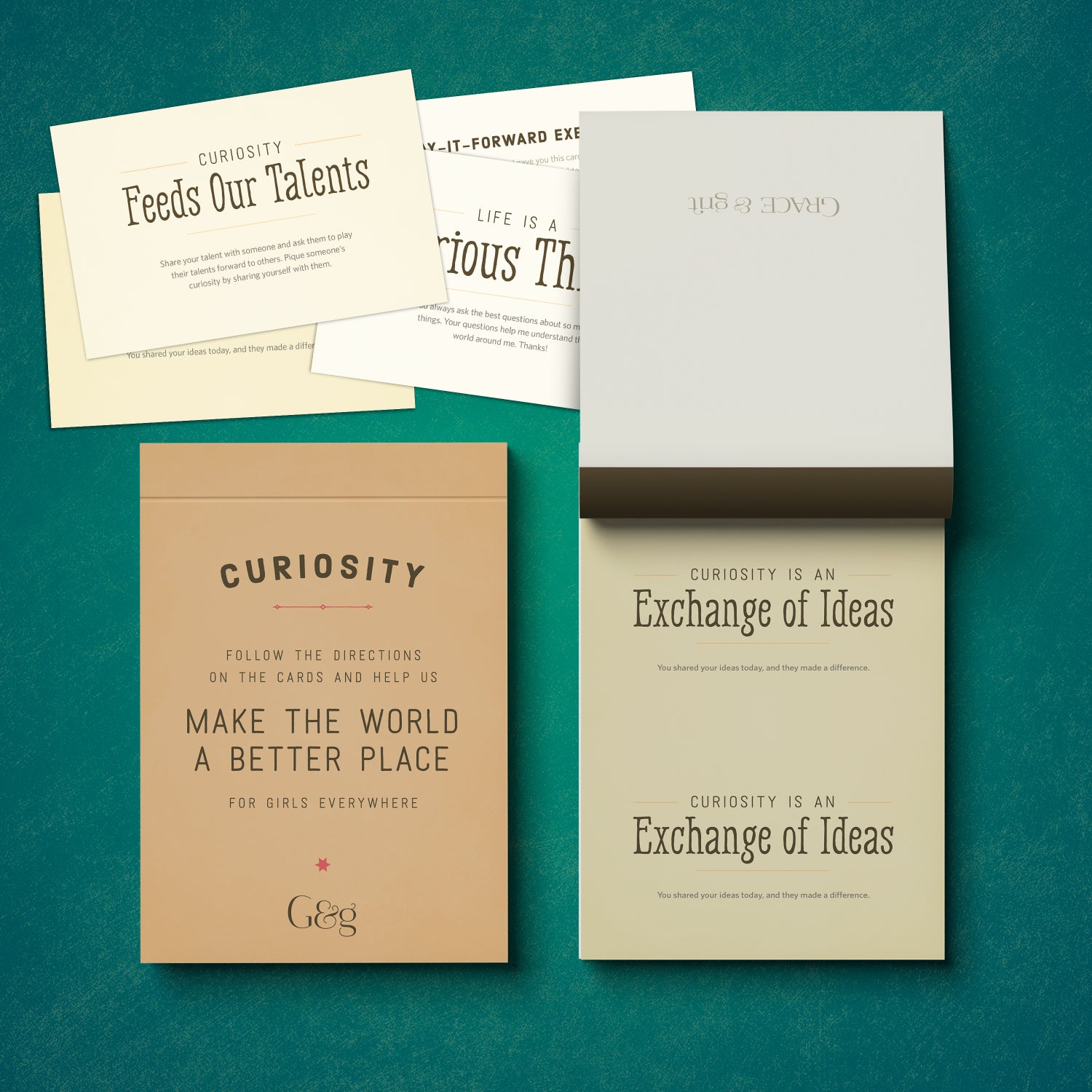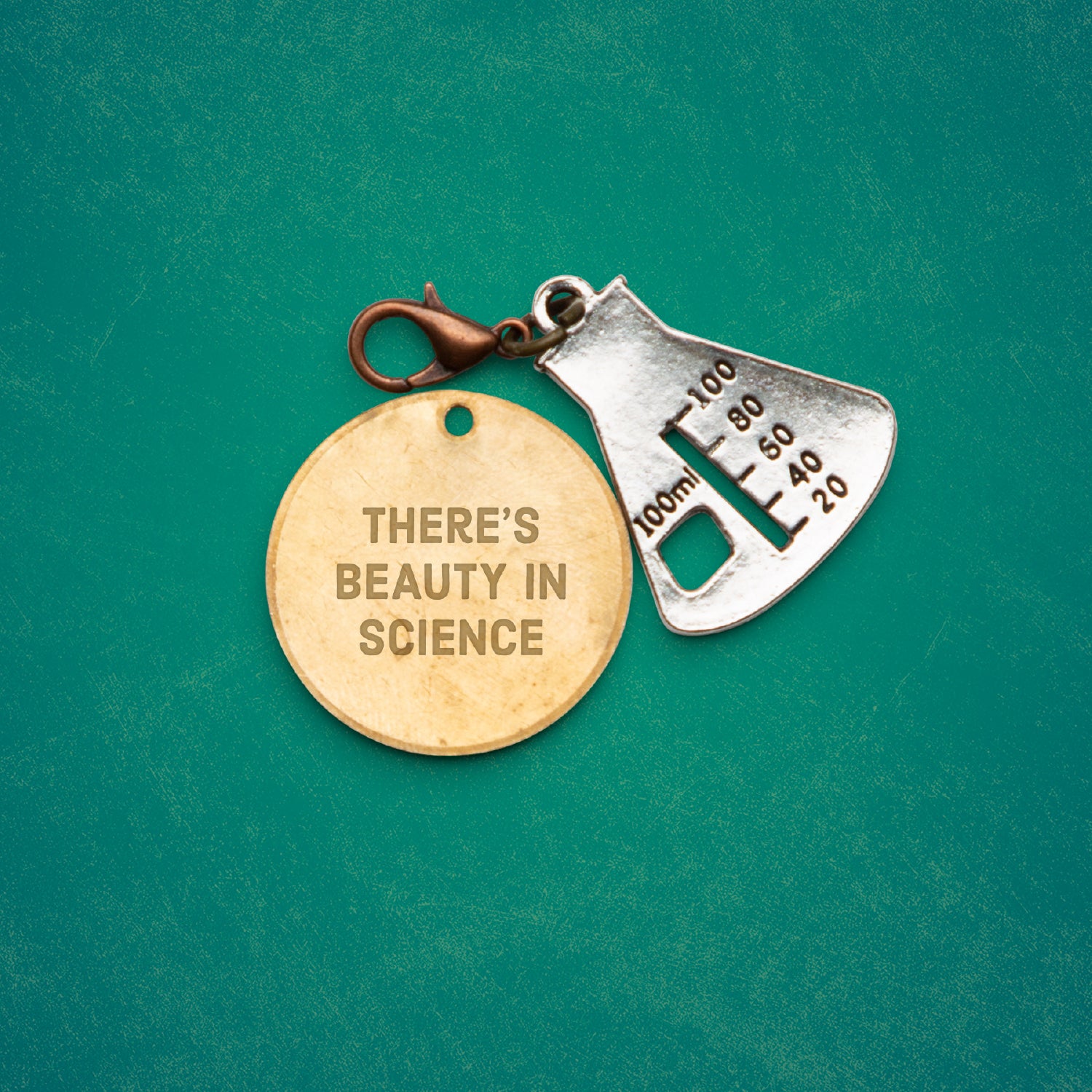Curiosity means the desire to learn something. When used with integrity, curiosity is a positive force in the world. This lesson gives a real-life example of a woman who decided to honor her curiosity and ended up helping humanity. It helps girls understand the importance of pursuing curiosity and how to incorporate the character trait into their lives and relationships.

Section One
Preparatory Reading
INTRODUCTION FROM HEATHER STARK: WHY MARIE CURIE?
When I learned my first child was a girl, there was a nursery rhyme that played over and over in my head:
What are little girls made of?
What are little girls made of?
Sugar and spice and everything nice.
That’s what little girls are made of.
When my daughter was born, I remember thinking about this poem and asking for the wisdom to help her grow into an independent, gracious woman who valued education and the world around her. But I always felt I was missing something. After a year or two, I started thinking perhaps it was more important for her to grow into a problem-solver. This was important to me. I wanted my daughter to fully understand she was the only thing that would stop her from reaching her goals—everything else was just a bump in the road. I felt a bit better about my wishes for her future, but still, I knew something was missing. It wasn’t until I started researching the life of Dr. Marie Curie that I realized what that was.
Dr. Marie Curie was a cool woman—and I mean this in terms of calm, cool and collected. She figured out early what she wanted in life and then figured out how to do it. She wasn’t full of overt emotions or drama; she simply did what needed to be done. Marie had two problems to be solved: how to break into the man-dominated world of science and how to break into the man-dominated world of education. Of course, these two problems led to a third one that she did not anticipate: how to overcome societal norms and expectations set for women in the late 1800s.
Women in the late 1870s were at a crossroads. Across Europe, there was a social movement among women. Literary salons were formed as a means for women to socialize and share ideas and knowledge with each other and thus further their education. During this time, the main education of women consisted of learning how to sew, draw, play an instrument, speak another language and run a household. The basics of reading and math were taught, but because women did not work outside of the home and were generally regarded as less intellectual when compared to men, the need for extensive lessons in math and science was deemed unnecessary.
Then, along came Marie Curie.
I don’t think adhering to social constraints or norms ever crossed Marie’s mind. Nor do I think she saw them as huge obstacles to overcome. I truly think she saw these problems as bumps in the road. Marie had a solid foundation to rely upon when she decided to break societal norms. Here was a woman whose parents were both teachers. History does not provide details about how her mother became a teacher or what she taught, other than to note she was headmistress at a private boarding school for girls; however, Marie’s dad was a math and physics teacher. Both of her parents encouraged her interest in science. Having two educated parents in Europe who supported a girl’s right to learn and interest in science was a rare occurrence. This played a vital role in Marie’s determination to find a way to make science her life.
Marie did not let social constraints keep her from learning. She was not overt about her desire to learn, but she wasn’t quiet about it, either. She just was herself and set about finding a way to do the things that she, as a woman, was simply not allowed to do. Marie didn’t bother with rumors, gossip or what others may have thought of her. In fact, her quote about people and ideas sums up her personality quite nicely: “Be less curious about people and more curious about ideas.”
This quote is more about the drive for knowledge and understanding than it is about ignoring people. Invest in ideas instead of the pettiness of people. Invest in the curiosity of life rather than abiding by social norms and bowing to predetermined expectations.
Marie wasn’t afraid to pursue an education when women were not allowed to go to college, earning advanced degrees in physics and math. She also wasn’t afraid to focus her life’s work on the pursuit of answers. She kept going and digging, and because of her determination, she found answers that many of us have benefited from—leading to radiation for cancer, the modern-day X-ray for broken bones, a change of mindset when it comes to women and their contributions to science. Marie and her curiosity were the key factors in these scientific and cultural breakthroughs.
In fact, Dr. Curie once said that women had questioned her about how she could justify being a scientist and a mother. Marie answered with a simple, “Well, it’s not easy,” and went on with her work. I would like to think that she knew she didn’t have to explain herself to anyone, which endears her to me even more. It gives her spirit a bit of a spicy edge. Which leads to the next thing I want for my daughter: Once she’s an adult, I pray that she learns the science of no explanation needed. She will not owe anyone an explanation for her decisions. There is a bit of rawness to this way of thinking, but it is a mindset that gives our daughters the freedom to make their own decisions, solve problems for themselves and do what is best for them.
There is a self-reliance I see in Dr. Curie that our girls need to tap into and make their own. This quality made her the first woman in Europe to earn a Ph.D. and the first person to win Nobel prizes in chemistry and physics. Her studies on the radiation of all compounds led to today’s medical breakthroughs that help kill cancer cells, and her research contributed to the development of the modern X-ray. Her problem-solving led to the solving of medical problems affecting millions of people worldwide. I wonder if Dr. Curie’s mom prayed for her to be a problem-solver too. I also wonder if her prayers were anything like mine. I recite the nursery rhyme again:
What are little girls made of?
What are little girls made of?
Sugar and spice and everything nice.
That’s what little girls are made of.
I missed the spice. Every girl needs spice.
So now my hopes center on my daughter growing into an independent, gracious, educated, problem-solving type of woman with a spicy-edged spirit—much like Dr. Marie Curie.
THE JOURNEY OF MARIE CURIE’S LIFE
Dr. Marie Curie was the first of her kind: the first woman to earn a Ph.D. in France’s history, the first woman recipient of a Nobel Prize (she received it twice), and the first woman faculty member at the University of Paris. Not to mention, she was a woman who was instrumental in helping soldiers during the First World War. Her accomplishments keep going, and all women should find her work a source of inspiration.
1867
Maria Skłodowska was born in Warsaw, Poland.
1882
At 15, Marie graduated high school with top honors and attended an underground “floating university,” the only option for women in Poland.
1891
Marie and her sister Bronya left Poland and enrolled in a Parisian university that accepted women while alternately working and attending school.
1893
Marie discovered two elements: polonium (which she named after her native Poland) and radium.
1903
Marie received her Ph.D. and was invited to the Royal Institution in London. She and her husband received a Nobel Prize in Physics for their work with radiation. Marie was the first woman ever to win a Nobel Prize.
1911
Marie was awarded a second Nobel Prize for Chemistry.
1914
During World War I, Marie became the Director of the Red Cross Radiology Service and worked on mobile X-ray units called “petites Curies” or “little Curies.”.
1922
Marie narrowed her work to concentrate on the chemistry
of radioactive substances.
1932
Marie died of aplastic anemia caused by the radiation she handled all her life.
Dr. Marie Curie’s life appears linear in fashion. She knew what she wanted from a young age and then pursued it. Her laser focus and determination illustrate that women can and will do whatever it takes for them to accomplish their goals.
CHARACTER TRAIT: CURIOSITY
Curiosity is a genderless quality, and like all character traits, it is born out of a human need or desire to understand our world. If girls are confident in who they are and what they want to achieve in life, they will be curious. It is a valuable character trait for all of tomorrow’s leaders.
Most discoveries are made because of someone’s curiosity. And some of history’s most notable revelations have been introduced by women. A curious spirit is a good thing.
In 1886, Josephine Cochrane must have said to herself, “I can’t stand washing the dishes; surely there must be a better way. If so, what is it, what does it look like, and how do I build it?” And thus, the first dishwasher was invented.
In the late 1800s, Margaret Knight decided that the common “round-bottomed paper bag” did not hold enough stuff, and somehow, there had to be a way to redesign this round bag so it could carry more. (She, too, must have valued packing as many items possible into one bag so she didn’t have to make 20 trips unloading groceries from the carriage to the house.) Margaret eventually came up with the prototype for our current “flat-bottomed bags,” thus making them more user-friendly. By the way, a man named Charles Annan tried to steal her idea from her and pass it off as his own. He claimed that a woman could not possibly be smart enough to design a flat-bottomed bag. Margaret proved this man wrong and received the patent for this design in 1871.
And lastly, Dr. Grace Hopper realized there must be a way to create a software program for computers that was easy to understand and that businesses could use. Thus followed the research that led her and her team to develop Flow-Matic, the first computer language that used English-like commands rather than mathematical symbols. Ironically, in 1969, she became the first person ever to receive the Computer Science Man-of-the-Year Award. Yep.
Curiosity is something generally assigned to a valued piece of life’s puzzle; hence, if one is curious about something, it must mean that particular nugget holds some degree of importance. Today’s girls need to be curious because this leads to the understanding that life is not always lived on the surface. Everyone has roots that go down deep, and when we dig at these roots, we understand why people act differently from each other and believe in different things. When we learn these underlying meanings in people’s lives, we suddenly see the value of accepting people just as they are. The harsh and critical judgment girls tend to sling at each other falls by the wayside and is replaced by acceptance, vulnerability and connection.
LESSON CONTENTS
Below are descriptions of each item we offer as part of the Curiosity Theme. Depending on your purchase, some of these may not be applicable.
- Illustrated Portrait
- Our portrait gives life to each of our sets. The green hue gives life and piques interest in Dr. Marie Curie's illustration. One can almost see her curiosity at work, her brain formulating questions: Why is this liquid green? What can I do with it? Can I break these chemicals down into smaller elements? One can see that Dr. Curie's pursuit of answers is clearly her passion.
- Activity Booklet
- The Activity Booklet highlights the themes in Dr. Marie Curie's life. It gives an overview of her journey into curiosity and the legacy she left behind. The booklet includes six thought-provoking activities that guide the readers to apply the lessons of Dr. Curie's life to their own. Girls will understand what curiosity looks, sounds and feels like. More importantly, they will understand how to be their own best advocate.
- Biography
- The Biography gives an in-depth telling of Dr. Curie’s life. The reader will learn about Dr. Curie's zest for science, how she defied the law to get an education and her contributions to science. Girls will also learn about her contributions to women and cancer. The Biography contains personal stories and quotes reinforcing Dr. Curie's curiosity.
- Biography Workbook
- The Biography Workbook allows the reader to dive into the lessons Dr. Curie's legacy teaches and apply them to their life. We took the same thought-provoking activities from the Activity Booklet and made them into a companion guide for the Biography. After completing the activities, girls will understand what curiosity looks, sounds and feels like. More importantly, they will understand how to be their own best advocate.
- Timeline Poster
- The Timeline Poster is a quick introduction to the life of Dr. Curie. One look at it, and the reader can easily spot the milestones in Dr. Curie's life, her determination and how she handled being a woman working in a man's world. From birth to death, girls can trace Dr. Curie's path and understand how her accomplishments changed the course of history.
- Play-It-Forward Cards
- Using the Play-It-Forward Cards allows your girls to generalize the lessons they have learned about Dr. Curie and her curiosity. By following the directions on the cards, they will acknowledge those instances where they see Dr. Curie's spirit in themselves and others in their community. The Play-It-Forward Cards encourage girls to support one another by encouraging and recognizing the pursuit of curiosity in others.
- Accessory
- The Accessory is a gift that reminds girls that Dr. Marie Curie was an academic, straight-up type of woman. The key to her success was her curiosity. Because of this, her accessory is a printed key fob with the quote, "You must never be fearful of what you are doing when it is right." This powerful quote is the key to a life well lived.
- Charm
- The charm is a reminder of Dr. Marie Curie's legacy. It symbolizes her curiosity as she chased answers that led to phenomenal scientific discoveries. The G&G Charm is a round disc that reads, "There is beauty in science," with a beaker attached. Combining the two is an excellent encouragement for girls entering STEM fields.

